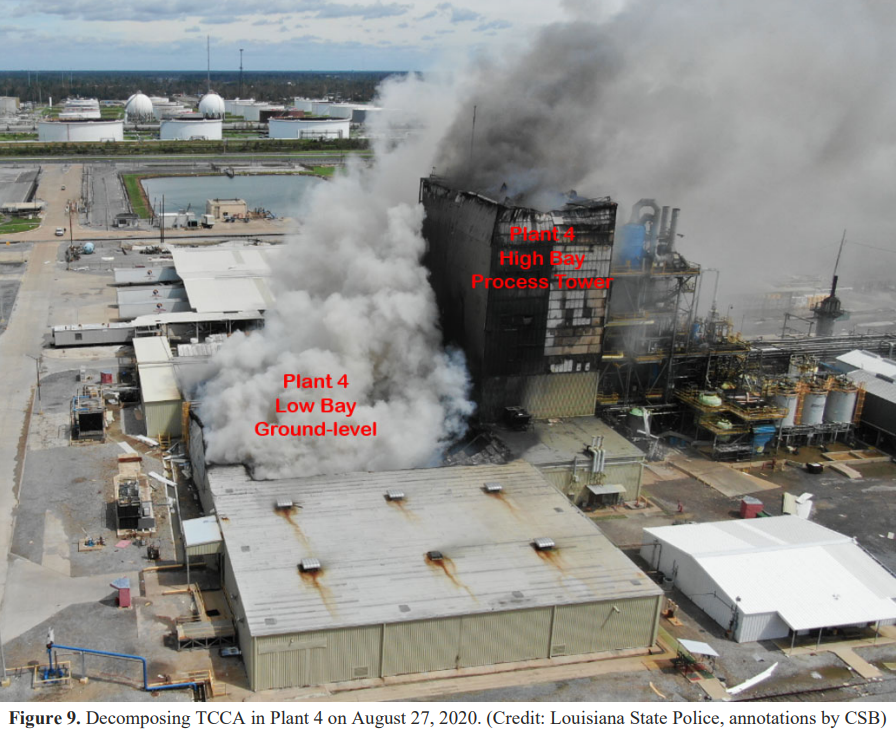Supporting Rational Evaluation Over Preconception by Facilitating Comprehensive Quantification
Wednesday, June 14, 2023
Life Cycle Air Pollution, Greenhouse Gas, and Traffic Externality Benefits and Costs of Electrifying Uber and Lyft
Tuesday, June 13, 2023
The regional economic impact of wildfires: Evidence from Southern Europe
 |
| https://en.wikipedia.org/wiki/Wildfire#/media/File:Burnout_ops_on_Mangum_Fire_McCall_Smokejumpers.jpg |
Conducting techno-economic analyses of early-stage designs for net-zero water and energy affordable homes
Monday, June 12, 2023
Policy evaluation of waste pricing programs using heterogeneous causal effect estimation
 |
| https://en.wikipedia.org/wiki/Naples_waste_management_crisis |
Friday, June 9, 2023
Tree cover and property values in the United States: A national meta-analysis
 |
| https://www.nature.org/en-us/what-we-do/our-priorities/build-healthy-cities/cities-stories/benefits-of-trees-forests/ |
Estimating the benefits of stream water quality improvements in urbanizing watersheds: An ecological production function approach
by Roger H. von Haefen (roger_von_haefen@ncsu.edu), George Van Houtven, Alexandra Naumenko, Daniel R. Obenour, Jonathan W. Miller, Melissa A. Kenney, Michael D. Gerst and Hillary Waters
Tuesday, May 23, 2023
New damage curves and multimodel analysis suggest lower optimal temperature
Sustainability transitions of contaminated sites: A global meta-analysis on economic effects of remediation behaviour
Monday, May 22, 2023
An Analysis of U.S. Multi-Family Housing, Eco-Certifications, & Walkability
 |
https://tinyurl.com/2o4r3tp2 |
EPA and State of New Jersey Propose Settlement with Bank of America for Monmouth County, NJ Superfund Site Cleanup
On May 15, 2023 the U.S. Environmental Protection Agency (EPA) announced a proposed settlement with Bank of America to address the White Swan Cleaners/Sun Cleaners Area Groundwater Contamination Superfund Site in Wall Township, Monmouth County, New Jersey. Under the proposed agreement, Bank of America, the current owner of the White Swan property, will be required to fund and perform vapor intrusion and groundwater cleanup work at an estimated cost of $29 million.
"With this settlement EPA is holding Bank of America accountable for its share of the cleanup at the White Swan site," said Regional Administrator Lisa F. Garcia. " After years of investigation and cleanup efforts, this is a significant step towards resolving the contamination issues at the site for the benefit of the community, the environment, and public health."
“The New Jersey Department of Environmental Protection and U.S. Environmental Protection Agency are committed to protecting the health of those who live and work in the vicinity of the White Swan Cleaners/Sun Cleaners site,” New Jersey Commissioner of Environmental Protection Shawn M. LaTourette said. “We have partnered together to test indoor air at hundreds of business and residential properties and installed ventilation systems on dozens with vapor intrusion concerns. This settlement with Bank of America ensures that long term cleanup, including remediation of contaminated groundwater and future vapor mitigation work, will be funded by the responsible party, not by the taxpayers.”
Bank of America became legally responsible for the site when it bought the White Swan property through a series of bank mergers and acquisitions in 2004.
Bank of America also will reimburse EPA for certain aspects of its cleanup work, paying $10.8 million, and pay up to $1.5 million for future EPA oversight costs. As part of the agreement, Bank of America will construct and then run the groundwater pump and treatment system for four years to capture and clean the most highly contaminated groundwater at the site.
The company will pay up to a total of $6.5 million to the State of New Jersey to settle its liability for cleanup and removal costs, to voluntarily resolve its liability for natural resource damages (NRD), and to address long-term operational needs of the treatment system. This amount includes $3.7 million for cleanup costs and $2.8 million set aside in an escrow account for any future groundwater system operation and maintenance or added vapor intrusion work needed after the State takes over the cleanup.
Vapor intrusion occurs when volatile organic compounds (VOCs) from contaminated soil and groundwater seep into buildings, potentially exposing occupants to harmful chemicals. EPA has found that the former dry-cleaning operations of White Swan Cleaners and Sun Cleaners were the sources of soil and groundwater contamination. VOCs from the contamination can easily evaporate into the air and cause health hazards. EPA added the site to the National Priorities List (NPL) in 2004. In the course of the cleanup, EPA and the New Jersey Department of Environmental Protection (NJDEP) have installed several indoor air ventilation systems after conducting indoor air testing on residential and commercial properties. In 2018, EPA also oversaw Bank of America’s removal of contaminated soil from the White Swan property. Cleanup of the Sun property, which is not related to the White Swan property, is being funded by EPA.
 |
| https://www.epa.gov/vaporintrusion/what-vapor-intrusion |
Press Release dated May 15, 2023
https://www.epa.gov/newsreleases/epa-and-state-new-jersey-propose-settlement-bank-america-monmouth-county-nj-superfund
The External Costs of Industrial Chemical Accidents: A Nationwide Property Value Study
U.S. Environmental Protection Agency (EPA) www.EPA.gov Environmental Economics Working Paper Series
Paper Number: 2023-01; Document Date: 02/2023
https://www.epa.gov/environmental-economics/external-costs-industrial-chemical-accidents-nationwide-property-value
Evaluating Property Value Impacts from Water-Related 'Green Infrastructure': A Hedonic Modeling Approach
Over the past several decades, the rapid growth of Southwestern United States desert cities is creating significant climate and water scarcity challenges. City planners are using green infrastructure to mitigate these challenges and develop more livable, sustainable, and resilient communities. This study uses hedonic pricing modeling (HPM) to evaluate how constructed wastewater wetlands impact home values integrated into the project design. It compares Crystal Gardens in Avondale, AZ, consisting of 14 engineered wastewater filtering ponds, to nearby neighborhoods with desert landscaping. HPM revealed higher values for Crystal Gardens homes overall (7%) and significant increases for homes on the ponds (14%). Results demonstrate the economic value of integrating water-related infrastructure in desert cities for home sales. For a more accurate benefit assessment, additional research is needed on how the ecosystem services provided by these constructed wetlands contribute to greater property values.
https://doi.org/10.3992/jgb.18.1.3
Sunday, May 21, 2023
Who Benefits from Hazardous Waste Cleanups? Evidence from the Housing Market
https://en.wikipedia.org/wiki/Hazardous_waste#/media/File:Valleyofdrums.jpg
National Bureau of Economic Research (NBER) www.NBER.org
Working Paper 30661; Issue Date November 2022
Policies, Projections, and the Social Cost of Carbon: Results from the DICE-2023 Model
Friday, May 12, 2023
Air pollution and health impacts of oil & gas production in the United States
1 Boston University School of Public Health, Boston, MA, United States of America jjbuono@bu.edu
2 Institute for the Environment, University of North Carolina, Chapel Hill, NC, United States of America
3 Environmental Defense Fund, Washington, DC, United States of America
4 Physicians, Scientists, and Engineers for Healthy Energy, Oakland, CA, United States of America
Environmental Research: Health https://iopscience.iop.org/journal/2752-5309 via IPO Science https://iopscience.iop.org/
Volume 1, Number 2; Published 8 May 2023
Thursday, May 11, 2023
Climate change and commercial real estate: Evidence from Hurricane Sandy
Table 2 presents the output from Equation (4). Column (1) shows the price impact regression results for New York. The estimates suggest that, all else equal, a one-mile increase in coastal proximity is associated with 21.6% slower price appreciation. The authors present the results for Boston in column (2). The estimates suggest that a one-mile increase in coastal proximity is associated with 9.5% slower price appreciation. The economic magnitude of this effect is equivalent to about 40% of the effect [they] estimate in New York. Given the absence of physical damages in Boston, [Addoum, Eichholtz, Steiner and Yönder] attribute this portion of the effect to increased salience and perception of flood risk, and the remaining 60% of the New York effect to the economic fallout from physical damages sustained during Sandy.
by Jawad M. Addoum, Piet Eichholtz, Eva Steiner, Erkan Yönder
Real Estate Economics via Wiley
Health, air pollution, and location choice
India’s proposed Market-Based Economic Dispatch Mechanism Aims to Optimize Power Sector Resources
RMI analysis reveals potential daily savings of INR 1.5–4 crores per day across peak and off-peak seasons in Maharashtra and Tamil Nadu using the MBED mechanism.
RMI’s new report, Transforming India’s Electricity Markets: The Promises of Market-Based Economic Dispatch and the Path Forward, highlights key leverage points for successful implementation of wholesale market reforms that ensures long-term sustainable growth of the power sector in India.
The Indian power sector has evolved rapidly over the past decades, driving economic growth. Now, India has an opportunity to ensure electricity is procured reliably and efficiently, while paving the way for deployment of innovative and flexible power generation technologies. RMI emphasizes that India will need to reform existing wholesale markets to leapfrog toward increasing shares of renewable energy. This warrants a national impetus on resolving financial challenges in the distribution sector, including optimizing power sector resources to strengthen the country’s energy security.
The report outlines the Market-Based Economic Dispatch (MBED) mechanism, creating a shared understanding among stakeholders of the status and impact of proposed changes to India’s wholesale power market. The report provides a summary of the current market design in India, identifies the anticipated benefits of the MBED mechanism, and looks at key barriers toward implementation. It also shares lessons learned from international electricity markets and provides recommendations to successfully transition to the MBED mechanism in India’s power sector.
RMI’s analysis across two states demonstrates cost savings through the efficient dispatch of a pooled generator portfolio and finds potential system cost savings of INR 1.5–4 crore (US$184,000–US$491,000) per day over business-as-usual scenario.
Press Release dated March 1, 2023
https://rmi.org/press-release/indias-proposed-economic-dispatch-mechanism-aims-to-optimize-power-sector-resources/
Wednesday, May 10, 2023
The Value of Scattered Greenery in Urban Areas: A Hedonic Analysis in Japan
New Vehicle Standards Will Produce Enormous Benefits for Consumers and the Climate
Regional Greenhouse Gas Initiative Would Lower Pennsylvania Emissions, Add to State Revenues, and Have Little to No Impact on Electricity Rates
A new report analyzes the expected impact on Pennsylvania emissions, power generation, revenue, and jobs, offering six central conclusions.
In 2022, despite fierce opposition, Pennsylvania joined the Regional Greenhouse Gas Initiative (RGGI), a cap-and-trade program designed to reduce carbon emissions from Northeastern and Mid-Atlantic power plants. Ongoing lawsuits have so far prevented the program from going into effect. But what impact would RGGI have on Pennsylvania if the program passes muster?
Researchers at the Kleinman Center for Energy Policy at the University of Pennsylvania and Resources for the Future (RFF) joined forces to find out. A new report released by the two institutions analyzes the expected impact on Pennsylvania emissions, power generation, revenue, and jobs, offering six central conclusions:
Joining RGGI reduces Pennsylvania’s electricity sector emissions to 84 percent below 2020 levels in 2030. Without RGGI, the state’s electricity sector emissions would be 52-49 percent below 2020 levels in 2030.
Combined Economic Effects in Pennsylvania
Joining RGGI decreases Pennsylvania exports slightly, but the state remains a major regional electricity exporter across all scenarios. The increase in renewable generation is not as large as the decrease in fossil generation, leading to a reduction in exports.
Pennsylvania gains substantial revenue from joining RGGI. While allowance prices are low in 2030 if Pennsylvania joins RGGI, the state still gains $101 to $148 million from the auction of emissions allowances in that year—much of it from allowances sold to generators in other states.
Joining RGGI is unlikely to impact overall employment in the state. Pennsylvania would have the opportunity to use some of the program revenue to benefit communities impacted by the phaseout of coal.
The team used RFF’s Haiku electricity model to see what would happen if Pennsylvania joined—or did not join—RGGI under two emissions scenarios: one in which RGGI’s emissions “cap” falls 3 percent per year, and one in which the RGGI cap falls at 3 percent per year through 2026 and to zero in 2040.


















.png)
